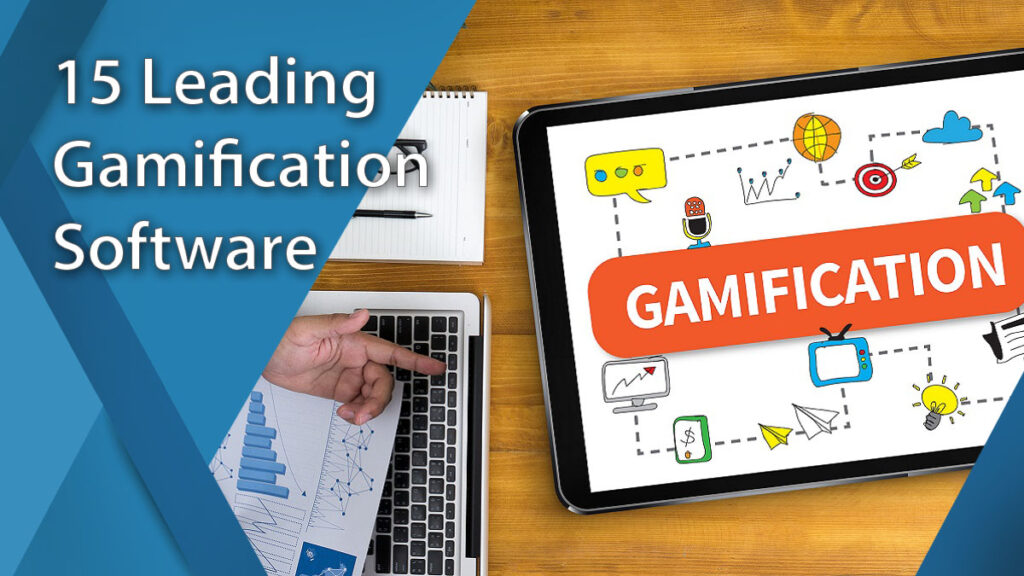
Are you tired of the same old boring methods for growing your small business? Look no further! In this blog post, we will show you how to gamify your growth and take your business to the next level. With our tips and tricks for building a successful gamification platform, you’ll be able to engage customers like never before and watch your business soar to new heights. Get ready to level up and transform the way you do business with gamification!
Introduction to Gamification and its Benefits for Businesses
Gamification has become a popular buzzword in the business world, but many are still unsure of what it really means and how it can benefit their businesses. In simple terms, gamification is the use of game mechanics and design elements in non-game contexts, such as business operations or marketing strategies. It involves incorporating game-like features such as points, levels, badges, challenges, and rewards into real-life tasks to drive engagement and motivation.
The concept of gamification may sound like a fad or just another way to make mundane tasks seem more interesting. However, when implemented correctly, it can have significant benefits for businesses of all sizes. In this section, we will explore some of the key advantages that gamification offers for small businesses.
1) Increased Employee Engagement: One of the main benefits of gamification is that it can boost employee engagement and motivation. By incorporating game elements into daily work activities, employees are more likely to feel motivated and driven to complete tasks. This leads to increased productivity and overall job satisfaction.
2) Improved Learning and Training: Gamified learning has been proven to be more effective than traditional methods in both retention rates and learner engagement. With interactive games and challenges incorporated into training programs, employees are more likely to retain information and apply it in their roles effectively.
3) Enhanced Customer Engagement: Gamifying customer interactions can also be highly beneficial for small businesses. By incorporating game elements into customer loyalty programs or marketing campaigns, businesses can capture the attention of consumers who are constantly bombarded with advertisements every day.
4) Data Collection: Gamification also provides an opportunity for businesses to collect valuable data on employee performance or consumer behaviour through tracking progress within the game platform. This data can then be used to identify areas for improvement or target specific audiences effectively.
5) Cost-Effective Solution: Unlike traditional incentives or rewards systems which require financial investments from businesses, gamification offers a more cost-effective solution. It can easily be implemented with minimal resources, making it accessible for small businesses.
Gamification has the potential to transform the way businesses operate and interact with their employees and customers. By leveraging game mechanics and design elements, small businesses can reap numerous benefits such as increased employee engagement, improved learning and training, enhanced customer engagement, valuable data collection, and cost-effectiveness. In the next section of this article, we will discuss some practical tips for building a successful gamification platform for small businesses.
Understanding the Key Elements of a Successful Gamification Platform
Gamification has become a popular strategy for businesses to engage and motivate their employees, customers, and target audience. By incorporating game elements into non-game contexts, gamification aims to increase participation, foster healthy competition, and drive desired behaviours.
However, creating a successful gamification platform requires more than just adding badges or points to a system. In fact, there are several key elements that need to be considered in order to build an effective and sustainable gamification platform for small businesses. Let’s take a closer look at these elements:
1. Clear Objectives:
The first step in building a successful gamification platform is defining clear objectives. What do you want to achieve through gamification? Is it increasing employee productivity? Improving customer engagement? Defining your goals will help you determine the appropriate game mechanics and design elements that align with your objectives.
2. Engaging Game Mechanics:
Game mechanics refer to the rules and processes that govern how the game is played. It is important to choose engaging mechanics that are relevant to your business objectives and resonate with your target audience. Some common game mechanics include points systems, leaderboards, challenges/quests, levels/progression, rewards/incentives, and social features.
3. Meaningful Rewards:
Rewards play a crucial role in motivating participants in a gamified system. However, it’s not just about giving out prizes or incentives randomly – they should be meaningful and desirable for the participants. This could be tangible rewards such as gift cards or discounts or intangible rewards like recognition or status within the community.
4. User-Friendly Interface:
The user interface (UI) of your gamification platform should be intuitive and easy-to-use. Participants should be able to navigate through the platform without any confusion or difficulty so they can focus on completing tasks and achieving goals.
5.Adequate Feedback Mechanisms:
Feedback mechanisms are essential for keeping participants engaged in a gamified system by providing them with a sense of progress and accomplishment. This could be in the form of real-time notifications, progress bars, or visual cues such as badges or levels.
6. Data Tracking and Analysis:
A successful gamification platform should have the capability to track and analyse data. This allows businesses to understand how users are interacting with the system and make necessary adjustments to improve engagement and drive desired behaviours.
Building a successful gamification platform for small businesses requires careful consideration of these key elements – objectives, game mechanics, rewards, user interface, feedback mechanisms, and data tracking. By incorporating these elements into your gamification strategy, you can create a fun and engaging experience that drives growth for your business.
Identifying Your Business’s Objectives for Implementing Gamification
When it comes to implementing gamification in your small business, it is crucial to have a clear understanding of your objectives. This means identifying what you hope to achieve by incorporating game-like elements into your business strategy.
One of the main purposes of gamification is to drive engagement and motivation among employees and customers. With this in mind, ask yourself what specific goals you want to accomplish through gamification. Are you looking to increase employee productivity? Improve customer loyalty? Increase sales? By pinpointing your main objectives, you can tailor your gamification platform accordingly.
Another important aspect to consider is the target audience for your gamification efforts. Different demographics may respond differently to game mechanics, so understanding who you are trying to engage will help inform the design and implementation of your platform. For example, if your target audience consists mainly of younger generations, incorporating social media sharing or leaderboards may be more effective than offering physical rewards.
Additionally, think about how gamification aligns with your overall business goals and values. It should not be seen as a standalone solution but rather as a tool that supports and enhances existing strategies. This requires a deep understanding of your company’s mission, vision, and brand identity. Your gamification efforts should reflect these core values and contribute towards achieving long-term success for your business.
It is also crucial to set measurable metrics for evaluating the effectiveness of your gamification platform. These could include tracking employee performance metrics such as sales numbers or customer satisfaction ratings before and after implementing gamification techniques. This data will not only help determine whether or not the platform is successful but also identify areas for improvement.
Furthermore, involving key stakeholders in the process can greatly enhance the success of a gamified approach. Collaborating with employees from different departments can provide valuable insights on what motivates them and how they perceive their work environment. Involving customers in focus groups or surveys can also give valuable feedback on their preferences for engaging with game-like elements.
Before embarking on the journey of implementing gamification in your small business, it is crucial to clearly identify your objectives. Knowing what you hope to achieve and who you are targeting will help guide the design and implementation of your gamification platform. Additionally, aligning with your overall business goals and involving stakeholders throughout the process can greatly enhance its success.
Strategies for Engaging Your Employees and Customers Through Gamification
Engaging employees and customers through gamification can be a highly effective way to increase motivation, productivity, and loyalty. However, simply implementing a gamification platform is not enough – it requires careful planning and strategizing to ensure that it is successful. In this section, we will discuss some key strategies for engaging your employees and customers through gamification.
- Define clear objectives: Before launching a gamification platform, it is important to identify what you want to achieve through it. This could be increasing sales, improving customer satisfaction, or enhancing employee performance. Having a clear set of objectives will help you design the right game mechanics and rewards that align with your goals.
- Understand your audience: Effective gamification relies on understanding the needs and preferences of your target audience – whether they are employees or customers. By conducting surveys or focus groups, you can gather valuable insights into what motivates them and tailor your gamification strategy accordingly.
- Offer relevant rewards: The success of any gamification platform depends on the incentives provided to participants. Offering tangible rewards such as gift cards or discounts may work well for customers, while employees may respond better to non-monetary rewards like recognition or opportunities for growth.
- Keep it simple: One common mistake businesses make when designing a gamification platform is making it too complex with numerous rules and levels. This can quickly become overwhelming for participants and defeat the purpose of engagement. Keep the game mechanics simple and easy to understand so that everyone can participate without feeling intimidated.
- Foster healthy competition: Competition can be an excellent motivator in gamifying tasks or activities within your business. Consider creating leaderboards or challenges that allow participants to compete against each other in a friendly manner while earning points and rewards.
- Incorporate social aspects: Humans are social creatures by nature, so incorporating social elements into your gamification strategy can enhance engagement levels significantly. For example, adding features like team challenges or allowing participants to share their progress on social media can create a sense of community and drive participation.
- Provide regular feedback: One of the key aspects of gamification is providing immediate feedback to participants, which helps keep them engaged and motivated. Make sure to provide regular updates on points earned or progress made, as well as constructive feedback when necessary.
By implementing these strategies, you can effectively engage your employees and customers through gamification and reap the benefits of increased motivation, productivity, and loyalty for your small business. Remember that successful gamification requires constant monitoring and tweaking to keep it engaging and relevant for your target audience.
Conclusion
In today’s fast-paced and competitive business world, it is essential for small businesses to find new and innovative ways to engage their customers and employees. By gamifying your growth strategy, you can create a fun and interactive experience that not only attracts customers but also motivates and rewards employees. With these tips in mind, you are now equipped with the knowledge to build a successful gamification platform for your small business. So why wait? Start implementing these strategies today and watch your business grow!




